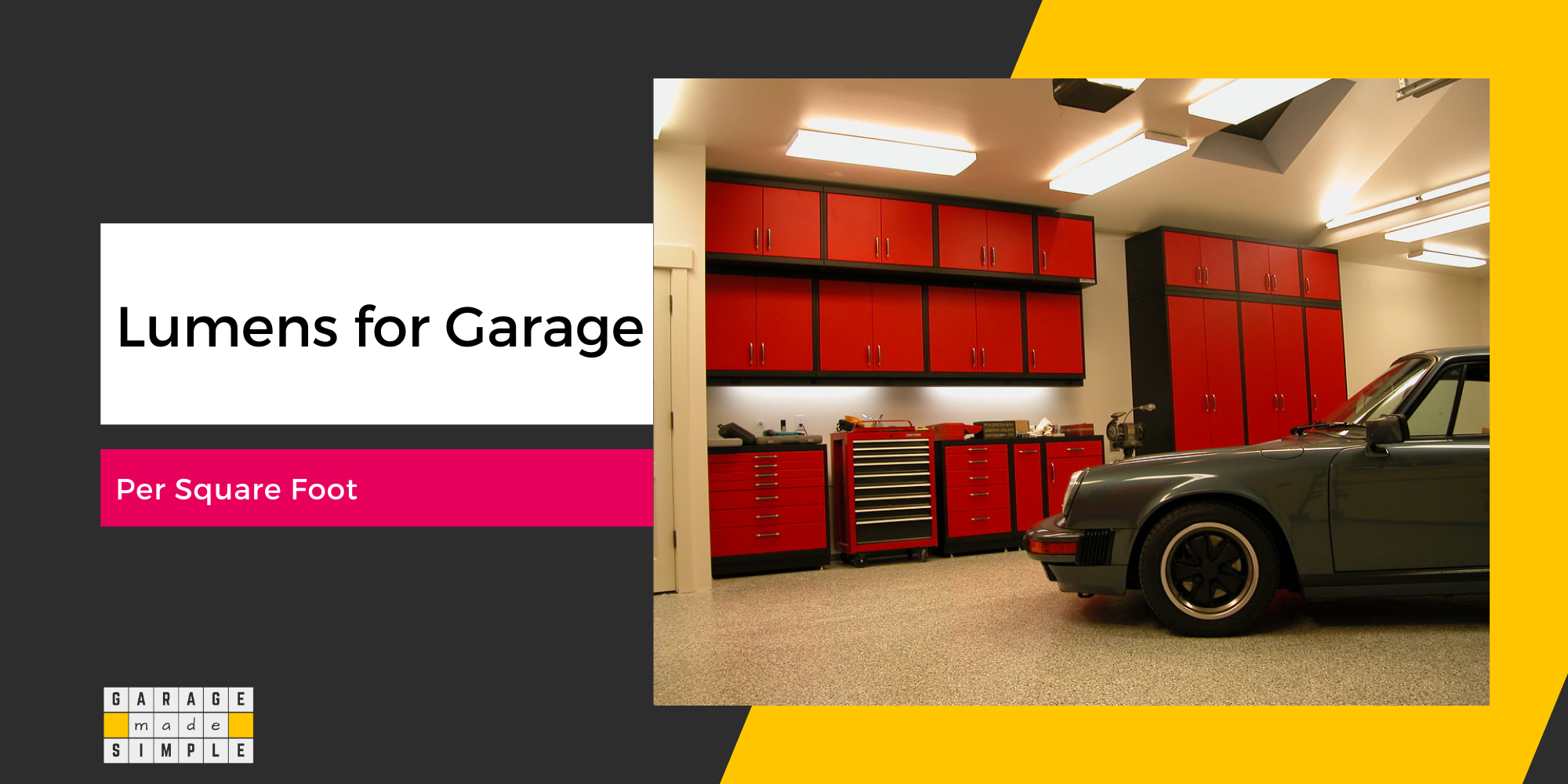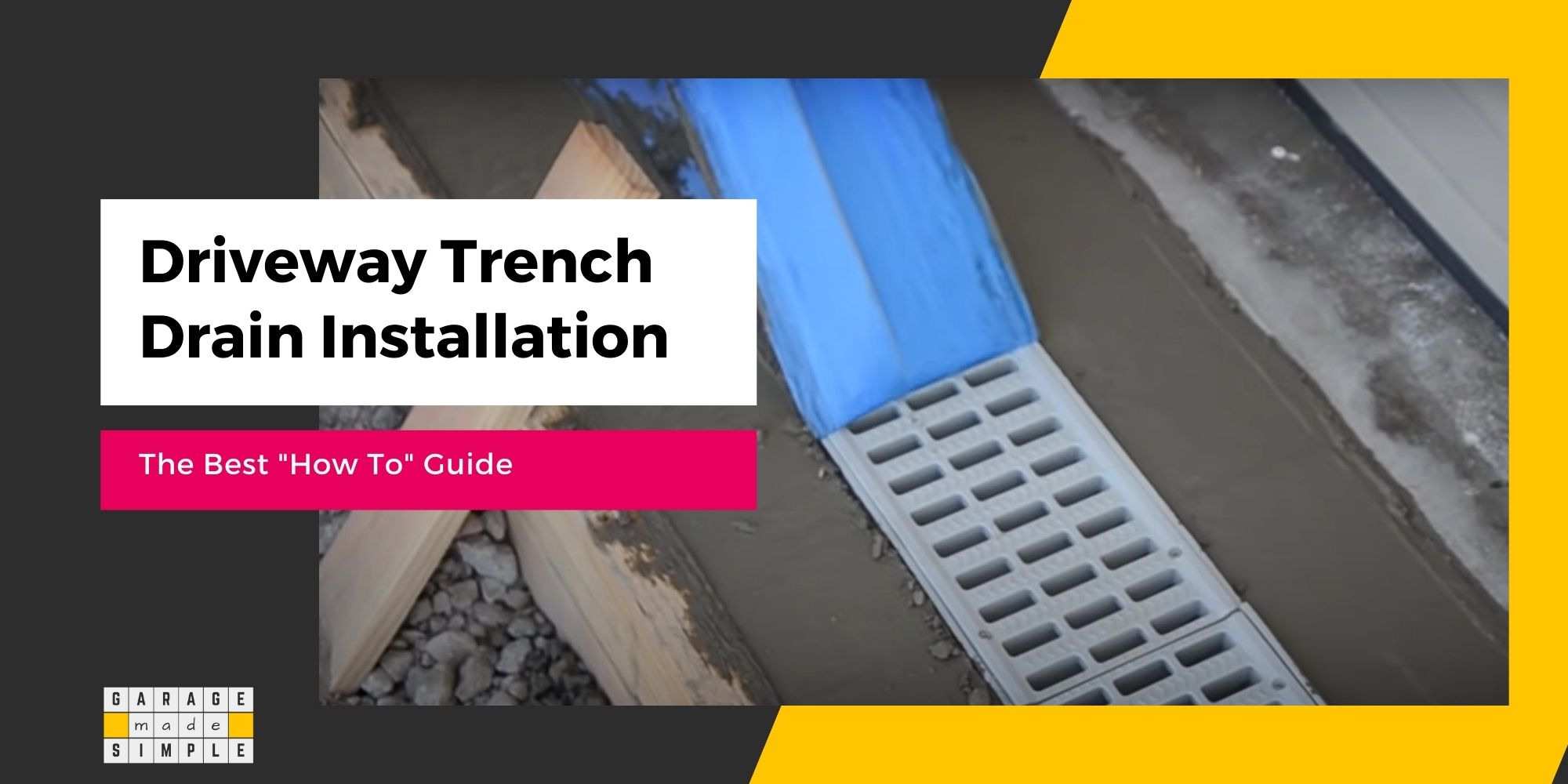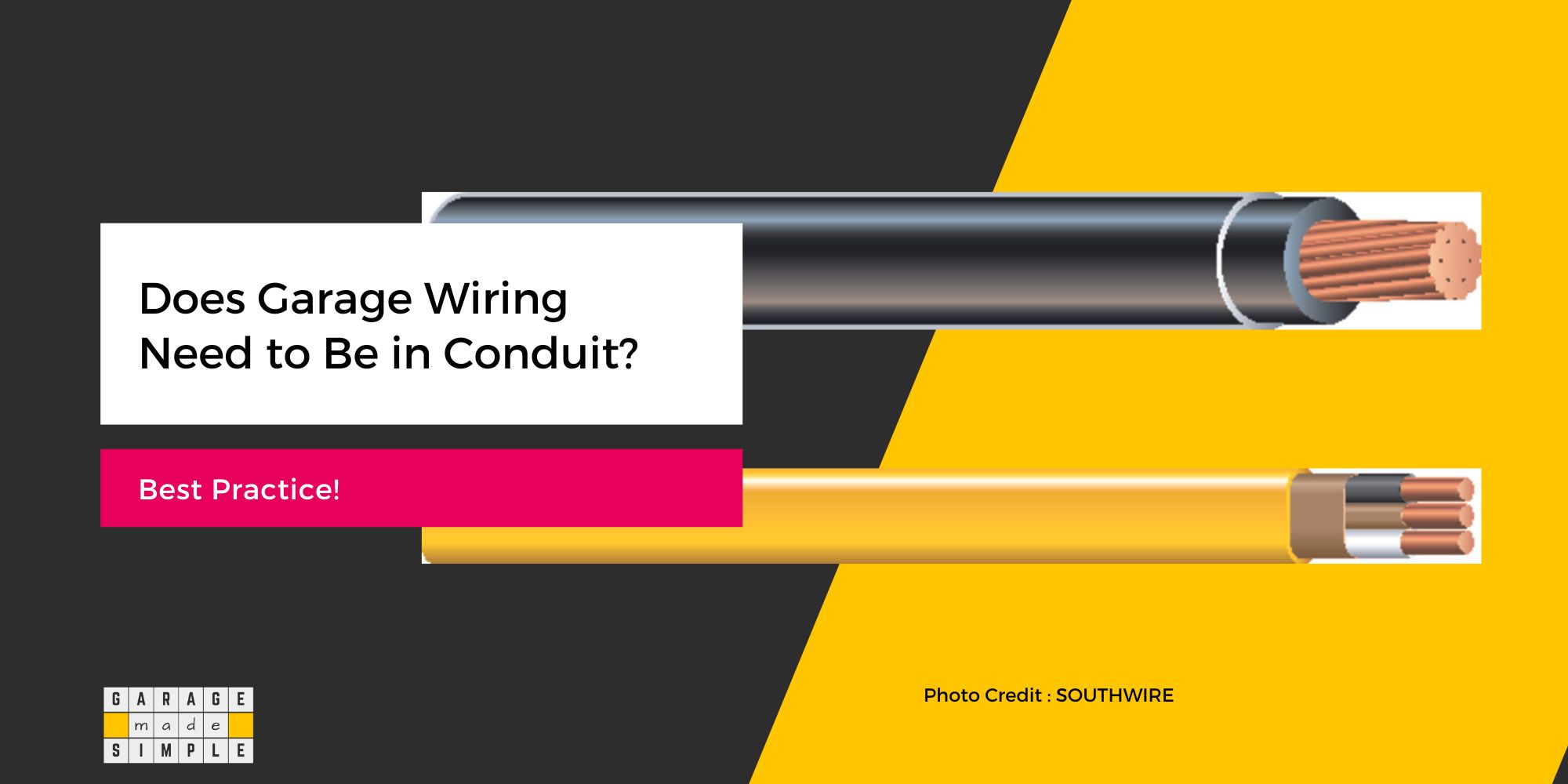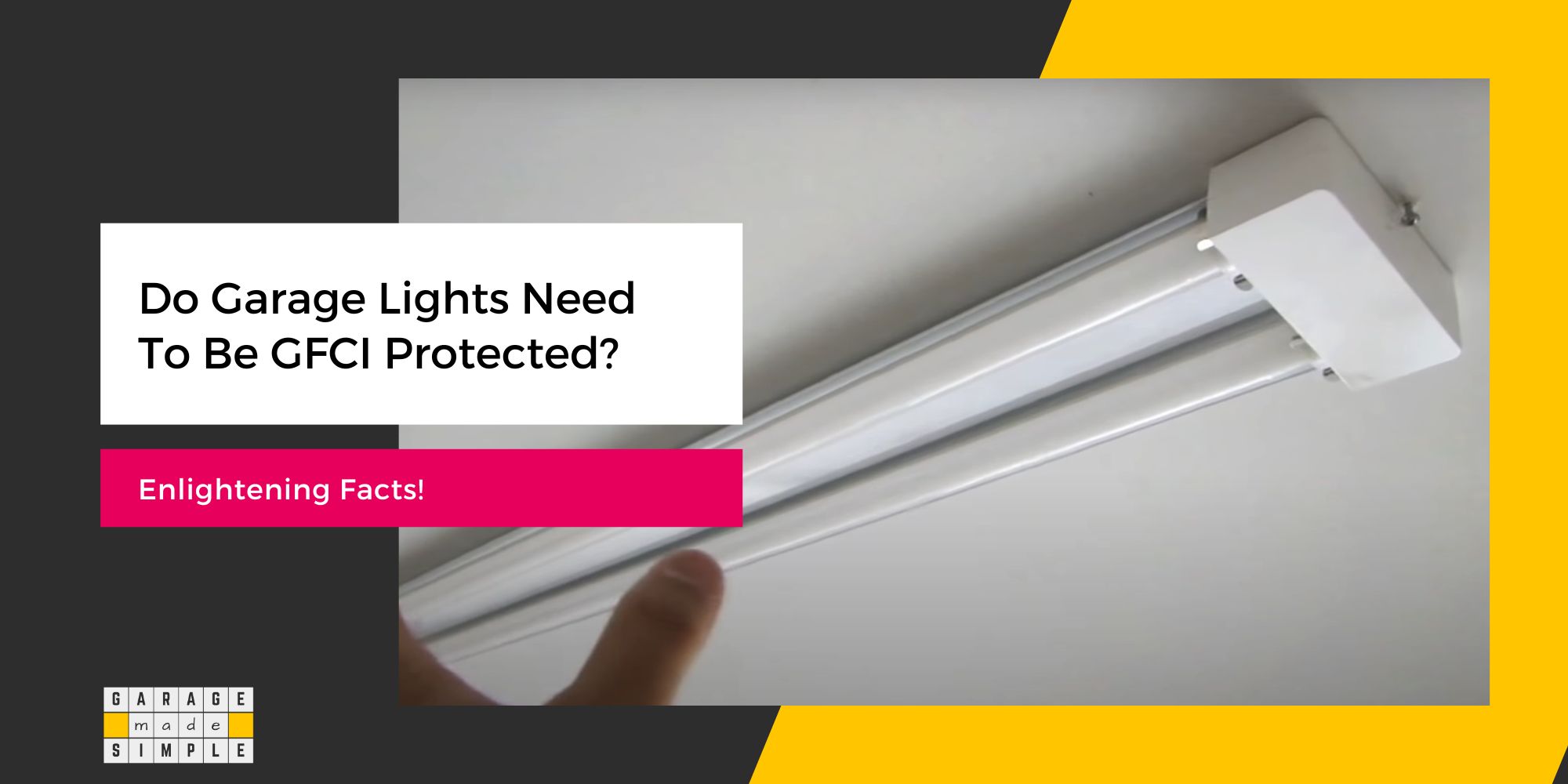Weeping Tile Around Garage: Comprehensive Guide
garagemadesimple.com is a participant in the Amazon Services LLC Associates Program, an affiliate advertising program designed to provide a means for sites to earn advertising fees by advertising and linking to Amazon.com . The website is also an affiliate of a few other brands.
What Is the Purpose of a Weeping Tile Around Garage?
Does your detached garage get flooded after a downpour in spite of a sturdy roof? The culprit might be missing or clogged weeping tile around garage. Wondering what a weeping tile does?
Weeping Tile Around Garage collects the groundwater when the water table rises and diverts it to a safe discharge point. They protect your garage foundation from damage and prevent groundwater from seeping in and pooling onto the garage floor.

Weeping Tiles are also known as French Drains or Perimeter Drains.
In this post I explain exactly why you need Weeping Tile Around Garage, especially your detached garage, how and when to install them and the Building Codes that you must comply with.
Why Do You Need Weeping Tile Around Garage?
A house with an attached garage or even a detached garage is always built on a foundation. The detached garage may have a T-shaped foundation or a Slab-on-grade foundation.
Water Table & Hydrostatic Pressure
The grade outside always has moisture. At a certain depth the groundwater completely saturates spaces between sediments and cracks in rocks. This level is known as the water table.
The water table rises when the precipitation increases. This typically happens during late winter and spring when the snow melts. The water in the soil exerts a pressure on the foundation and this is called the hydrostatic pressure.
A rise in the water table increases the hydrostatic pressure on the garage foundation.
Perimeter Drain
The function of the drainage around the garage is to move the water away from the garage foundation and reduce the hydrostatic pressure. Low or no hydrostatic pressure on the foundation will ensure
- Your foundation will not deteriorate
- Your garage floor will not have water pooling
Drainage around a building such as a detached garage is called a “perimeter drain”. “Perimeter Drain” is also known as a “French Drain” or a “Weeping Tile”. There are slight differences, which I will explain later in the post.
Required by Code
Weeping Tile around the garage is a requirement as per Section 1805.4.2 Foundation Drain of Chapter 18 of the 2021 International Building Code (IBC). The exact requirement is referenced later in the post.
Weeping Tile vs French Drain vs Perimeter Drain
Weeping Tile, French Drain, Perimeter Drain, Footing Drain and Trench Drain are often used interchangeably. This is understandable as they serve the same basic purpose.
The purpose is to collect the groundwater in the vicinity of the building’s foundation and divert it away. The rise of the water table and the consequent hydrostatic pressure on the foundation is thereby averted.

Licensed under Public Domain via Wikimedia Commons – http://commons.wikimedia.org/wiki/File:French_drain_diagram.jpg#mediaviewer/File:French_drain_diagram.jpg
Weeping Tile vs French Drain (What’s the Difference?)
The Weeping Tile System uses 4” PVC pipes with slits or perforations on the upper part of the pipe. These slits or perforations are called “weep holes”.
The pipe is buried in the soil such that the weep holes are below the foundation. Whenever the water level in the soil rises above the weep holes, it falls into the pipe and is drained away either by gravity or by a pump.
A Weeping Tile System can be installed inside, most commonly in basements, or outside around the building foundation. A French Drain System is a Weeping Tile System that is installed outside.
Basically, a French Drain is a subset of Weeping Tile.
Perimeter Drain vs French Drain (What’s the Difference?)
A French Drain is a subsoil drainage system that is used to drain away ground water. It could be used on your lot wherever required. For example, you can use it in your backyard to drain away water from areas where puddles often form. You can use it along the driveway.
A Perimeter Drain on the other hand is specifically meant to protect the building foundation. A Perimeter Drain is therefore a French Drain or a Weeping Tile that runs around the entire length of the house or garage perimeter.
So, a Perimeter Drain is a subset of French Drain.
A perimeter drain is very helpful in making your garage flood proof.
How to Install Weeping Tile Around Garage?
The best time to install Weeping Tiles or French Drains around a detached garage is when you start constructing the garage. You are anyway digging up the grade. You might as well dig the trench around the garage foundation at the same time.
This way you are also very sure where the foundation wall sits on the footing or the depth of the slab-on-grade foundation. Installing French Drains (aka Weeping Tiles) around the garage is labor intensive.
Here’s a simplified step-by-step guide on installing weeping tile around garage:
Exterior Weeping Tile Installation
- Digging Trench: Excavate a trench around the garage with a slope of one inch every eight feet, reaching the footings.
- Granite or Gravel: Line the trench bottom with washed granite or river gravel for efficient drainage without clogging.
- PVC Pipe Installation: Use rigid PVC pipe with pre-drilled holes; cover with fabric to prevent obstructions.
- Backfilling: Cover the pipe with gravel, soil, and sod, providing a foundation for landscaping.
Truper Tru Pro California Trenching Shovel
- 48-inch pro grade fiberglass handle with soft cushion grip for balance and control
- Heavy duty 14 gauge steel blade for maximum toughness
- Reinforced resin -feetinsert-feet in handle provides 400 lbs of handle strength
- Rivetless, crimped-steel collar ring, solidly connects neck and handle
- Thick fiberglass handle with protective sleeve prevents splintering
Interior Weeping Tile Installation
- Concrete Cutting: Cut the basement floor using a circular saw with a concrete blade and a chipping hammer.
- Excavation: Dig a trench one to two feet deep, adding washed gravel to the bottom.
- PVC Pipe Placement: Use fabric-covered PVC pipe with slots upward; connect to the sump pump for drainage.
- Concrete Pouring: Cover the trench with gravel, allow it to settle, then pour concrete over the area.
Mistakes made at the installation stage can result in costly and time consuming repairs later. And there is also the IBC Code to comply with. So it is a good idea to employ the services of an experienced plumbing contractor and use high quality materials.
Whether you do it yourself or use the services of a plumbing contractor, you need to know a few things about installing weeping tiles (French Drains) around the garage.
How Far from the Foundation to Place French Drains?
Section 1805.4.2 of the 2021 International Building Code (IBC) states:
The drain shall extend not less than 12 inches (305 mm) beyond the outside edge of the footing.
And of course you do not want it so far that the groundwater from the grade in between the footing edge and the French Drain can not be trapped by the drain.
It is also a good idea to have the grade slope away from the garage exterior walls. According to Section 1804.4 of the 2021 International Building Code (IBC)
The ground immediately adjacent to the foundation shall be sloped away from the building at a slope of not less than one unit vertical in 20 units horizontal (5-percent slope) for a minimum distance of 10 feet (3048 mm) measured perpendicular to the face of the wall.
How Deep Should the Weeping Tile Around Garage be?
The depth at which the Weeping Tile Around Garage should be laid is an important consideration.
The top end of the weeping tile (French Drain), that has the weep holes, should be above the footing top. The bottom of the French Drain should be below the bottom of the base under the garage floor.
Section 1805.4.2 of the 2021 International Building Code (IBC) states:
The thickness shall be such that the bottom of the drain is not higher than the bottom of the base under the floor, and the top of the drain is not less than 6 inches (152 mm) above the top of the footing.
Can Downspout be Connected to Weeping Tile?
In theory the downspout can be connected to the weeping tile system. However this is not a good idea for a house that has internal weeping tiles in the basement. The perimeter drain can get clogged for a variety of reasons. A heavy shower and your basement may get flooded.
In the case of a detached garage the downspout from the garage roof can be connected to the Weeping Tile (French Drain) around the garage. But I would still advise against it. Same reason. If the French Drains get clogged, your garage may get flooded.
I think it is best to follow the advice on the United States Environmental Protection Agency (EPA) website.
Downspout disconnection is the process of disconnecting the downspout from a pipe or the paved area. Water is then redirected to flow into a rain barrel or to a lawn or garden where it can soak into the ground. Redirecting downspouts to a landscaped area is a great way to help reduce runoff from a property.
United States Environmental Protection Agency (EPA)
Water from the downspout is rainwater or snowmelt. This water is naturally pure and it is best to return it to nature, wherever and whenever possible. If this is not possible, install a separate, non-perforated drain pipe either to the storm water drainage system or a drain to daylight.
Where does the Weeping Tile Around Garage Drain?
The Weeping Tile, French Drain or the Perimeter Drain (Whatever you wish to call it) around your garage should ultimately connect to a non-perforated drain pipe that leads to the storm sewer beneath your street or a drain to daylight.
Section 1805.4.3 of the 2021 International Building Code (IBC) clarifies this as under:
The floor base and foundation perimeter drain shall discharge by gravity or mechanical means into an approved drainage system that complies with the International Plumbing Code.
Exception: Where a site is located in a well-drained gravel or sand/gravel mixture soils, a dedicated drainage system is not required.
Excerpts from the Relevant Sections of IBC
Chapter 18 of the 2021 International Building Code (IBC) deals with Soils and Foundations. Section 1805 deals with Dampproofing and Waterproofing.
Excerpt from Section 1805.4 Subsoil Drainage System:
Where a hydrostatic pressure condition does not exist, dampproofing shall be provided and a base shall be installed under the floor and a drain installed around the foundation perimeter.
Excerpt from Section 1805.4.2 Foundation Drain:
A drain shall be placed around the perimeter of a foundation that consists of gravel or crushed stone containing not more than 10 percent material that passes through a No 4 (4.75 mm) sieve.
The drain shall extend not less than 12 inches (305 mm) beyond the outside edge of the footing.
The thickness shall be such that the bottom of the drain is not higher than the bottom of the base under the floor, and the top of the drain is not less than 6 inches (152 mm) above the top of the footing.
The top of the drain shall be covered with an approved filter membrane material. Where a drain tile or a perforated pipe is used, the invert of the pipe or tile shall not be higher than the floor elevation. The top of joints or the top of perforations shall be protected with an approved filter membrane material.
The pipe or tile shall be placed on not less than 2 inches (51 mm) of gravel or crushed stone complying with Section 1805.4.1, and shall be covered with no less than 6 inches (152 mm) of the same material.
Excerpt from Section 1805.4.3 Drainage Discharge:
The floor base and foundation perimeter drain shall discharge by gravity or mechanical means into an approved drainage system that complies with the International Plumbing Code.
Exception: Where a site is located in a well-drained gravel or sand/gravel mixture soils, a dedicated drainage system is not required.
Thank you very much for reading the post. I do hope you found it informative and useful.








